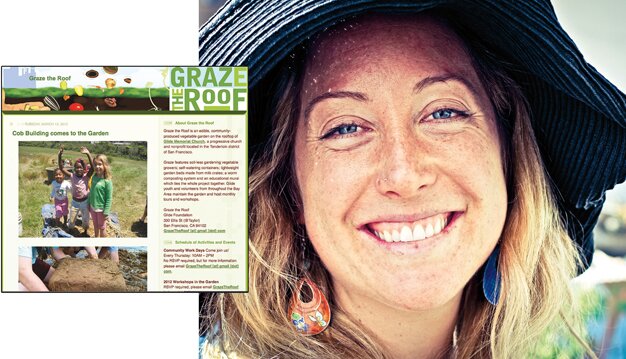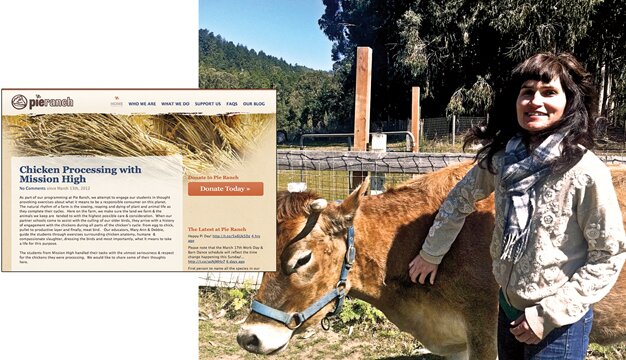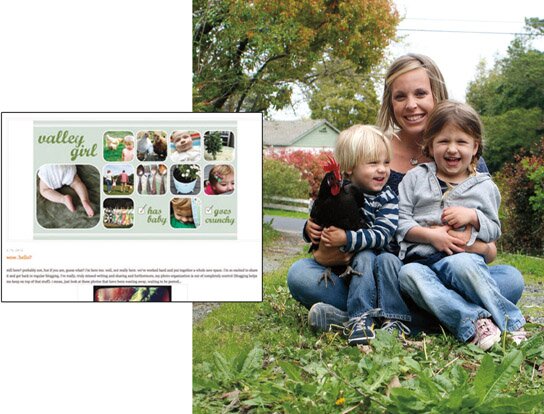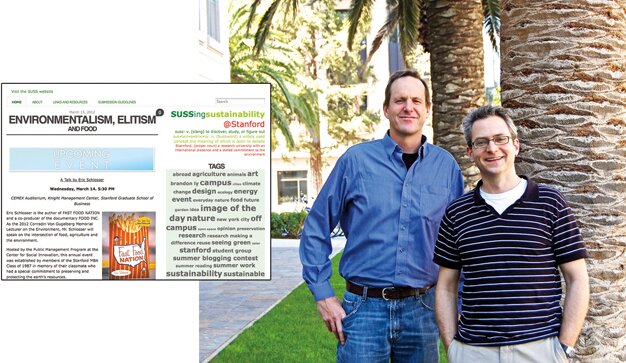Green Bloggers
Online writers share their insights
Blogger Erin Addiego
The Internet is abuzz with bloggers of varying pursuits and passions, some aiming to create a written forum for connecting with others, others hoping to carve out a space for affecting change. Among those logging hours at the keyboard are these six activists, parents, farmers, and foodies who take on issues essential to green living, conservation, and healthy eating.
Land Protection / OpenSpaceCouncil.typepad.com
Annie Burke writes and maintains the blog of the Bay Area Open Space Council. An organization devoted to the protection of public parks, trails, and agricultural land in the Bay Area, the Open Space Council uses its blog to bring attention to critical issues such as “climate change, state park closures, and their member organizations,” Burke says. “Seventy state parks are slated to close this year, but all 238 parks are being affected by budget cuts.”
The blog is vital to the Open Space Council’s efforts because “it tells a story you’d write in a grant proposal, but few people read that. The work of the Open Space Council is pretty intangible, so one thing the blog does is provide visible ways for readers to connect to what we’re doing.”
The results of Burke’s online labors were not obvious at first. She says, “It’s hard to find a cause-effect relationship… No one says, ‘here’s a check for a million dollars because of your blog.’ But we have raised more money in the last year and a half than in previous years.”
 Food & Drink / ChezUs.com
Food & Drink / ChezUs.com
With a slogan of “live small, eat big,” Denise Woodward and her husband plan their blog topics around the seasonal meals they cook each week. What began as a marketing experiment for their business—to see if they could push traffic to a website using social media—turned into something more as they combined their two passions: food and photography.
Woodward says, “Little did we know, people would love [the blog] and we would want to continue to feed it.” She says she and her husband strive to “provide readers with healthy recipes using fresh ingredients instead of processed foods.” She wants readers to be aware that “eating seasonally reduces our carbon imprint,” which can be as simple as “eating root vegetables during the winter and strawberries in the summer.” All meals are prepared in the couple’s 20-square-foot kitchen, which provides an unexpected benefit—the scant cupboard space forces them to store less and eat fresher ingredients.
Weekly features on the blog such as “Friday Cocktail Hour,” which describes a new drink every week, keep readers coming back. Woodward encourages her readers with advice like “it’s easy to make a simple and healthy meal at home. While you’re helping your kids do their homework, why not have a simple chicken roasting in the oven?”
 Community Gardens / GrazetheRoof.blogspot.com
Community Gardens / GrazetheRoof.blogspot.com
In the Tenderloin district of San Francisco, Graze the Roof is a community-produced vegetable garden on the rooftop of Glide Memorial Church. Lindsey Goldberg, who writes the blog for the garden, says the vegetables are contributed to the Glide Foundation, which distributes 3,000 meals a day. “Our weekly harvest is about 10 to 15 pounds of produce a week, which is considerable for a rooftop space.”
The goal for Goldberg’s blog and the community garden is the same, she says. They are intended to “create a vibrant urban agriculture within the city.”
With soil-less vegetable growers, garden beds made from milk crates, and self-watering containers, “our aim is to activate underutilized surfaces, such as rooftops, and also to be a source for teaching children of all ages about urban agriculture,” Goldberg says.
A positive result of Goldberg’s blog is increased participation at the garden’s community workdays and weekend workshops. “Because of the blog, we’re able to receive gratitude for the work. Even the folks who can’t make it to the site to volunteer will often send emails saying ‘thanks’ or ‘great job,’ and the blog allows them to live vicariously through the project.”
 Farming / PieRanch.org/blog
Farming / PieRanch.org/blog
Kelly Munoz of Pie Ranch says her blog is about “keeping readers educated on the daily aspects of farm life, and teaching kids about ‘farm to fork’—sustainably grown, healthy foods.” Pie Ranch, a 14-acre triangular slice of land in Pescadero, was named for its distinct pie shape and also as a way to relate how food comes from the land to our tables.
Munoz says she covers topics like “the high cost of land available to farmers in the Bay Area, and the geographical challenges facing urban youth as they try to find nutritional food in their neighborhoods.” To engage her blog’s readers, she says, “We keep a close eye on the feedback on the site and respond with stories that reflect reader interest. Readers have quite an appetite for what it’s like to farm. It’s symptomatic of the shrinking number of people who actually farm for a living and a yearning in people to reawaken their connection to the land.”
A recurring feature on the blog is “Recipes from the Farm” by the Pie Ranch’s chef-educator, who works with visiting students. Pie Ranch also hosts a monthly community workday and old-fashioned barn dance on the third Saturday of every month.
 Living Green / ValleyGirlHasBabyGoesCrunchy.blogspot.com
Living Green / ValleyGirlHasBabyGoesCrunchy.blogspot.com
Erin Addiego started writing her blog to chronicle changes she made in her life after the birth of her daughter. The mother-turned-blogger says, “The absolute simplicity of her babyhood showed me how little people really need versus what they want to have. I was motivated to change the products we were using in our home and on our bodies to keep her as safe and healthy as possible.”
And from there, Addiego says, “It was a snowball effect. I started asking, ‘What’s in the food that we are eating? How can we save water? Can we make our own bread, our own butter?’ ”
Addiego’s blog includes posts about urban farming, green housecleaning products, composting, cloth diapering, and cooking with locally grown food. She says that she “hopes to show people that being green has a lot to do with kicking the consumerism habit. Choosing to purchase previously owned items is always going to be a greener choice.”
This mindset led to Addiego and her husband starting their own antique furniture business, www.SchoolbusVintage.com. Addiego says there are “many ‘eco-friendly’ blogs out there pushing products people don’t need, which, at its core, is the exact opposite of eco-friendly.” She believes it is her job as a blogger to ask questions, such as, “Is that product as ecologically friendly as they are making it seem, or is it just clever marketing?”
 Sustainability / Suss.Stanford.edu/blog
Sustainability / Suss.Stanford.edu/blog
In March 2011, Mark Feldman and John Peterson, two professors of writing and rhetoric at Stanford University, launched a project that funded two students to carry out research related to Stanford and sustainability issues. Then they instructed those students to make their findings public.
Feldman says, “In the course of that year we launched a blog as a communication tool to link a community of activists on the Stanford campus and beyond. Reflecting on that first year, we realized the blog was the most exciting part of that project and what we wanted to expand on.”
Each post on the Stanford blog “helps readers understand ways to approach sustainability from a creative angle,” says Peterson. “One student writing about a backpacking trip communicates the value of a natural environment, and another student using photos of sailing helps readers understand water issues.”
The topics on the site are entirely student-driven. Feldman says, “With the magic of Google searching, our readership gets broader because of the eclectic nature of our stories.” Peterson adds that “part of the mission is that sustainability needs communication in order to work. We need people to share artwork and ideas and what they’re discovering. When you put all that together in one place, it draws people together and you realize how many of us are working on projects that can add to sustainability.”

